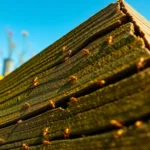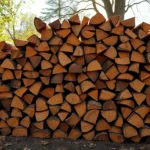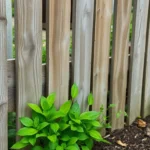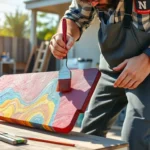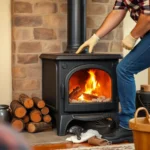When we’re tackling DIY projects or giving our space a makeover, choosing the right materials can make all the difference. And when it comes to building durable, stylish shelves, plywood often tops the list. But not all plywood is created equal, and finding the best type for your shelves can be a bit of a puzzle.
We’ve all been there, standing in the aisles of our local hardware store, overwhelmed by options. Birch, oak, marine – the choices seem endless. But fear not, because we’re here to guide you through the maze. We’ll help you understand the key factors that make certain plywood stand out for shelving projects, ensuring your next DIY venture is not just successful, but also brings that wow factor to your space.
The Different Types of Plywood for Shelves
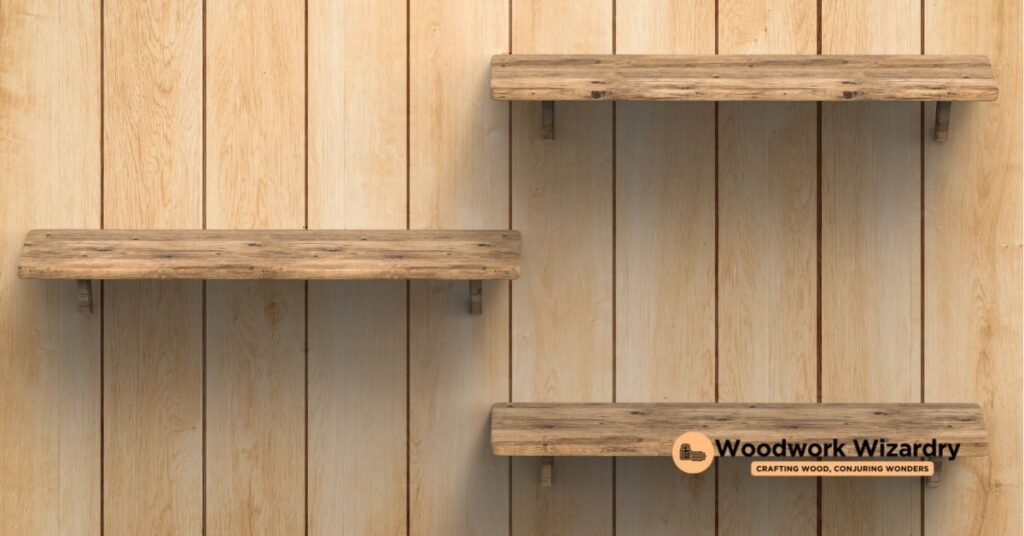
Picking the right plywood for your shelving projects is crucial. Let’s dive into the different types to help you make an informed decision.
Softwood Plywood
Softwood plywood is a fantastic choice for those on a budget. Made from woods like pine, cedar, and spruce, it provides a cost-effective solution without compromising on durability. Ideal for utility shelves in garages or closets, softwood plywood is easy to work with, whether you’re cutting or finishing. It’s lightweight, making it easy to handle and install, perfect for those DIY projects where you’re flying solo.
Hardwood Plywood
For shelves that demand a touch of elegance and strength, hardwood plywood is the way to go. Woods like oak, maple, and birch not only bring warmth and beauty but also offer superior durability and resistance to wear. They’re the top pick for making statement pieces in living rooms or bedrooms. Hardwood plywood can hold heavier items, making it suitable for bookshelves or entertainment units. Its smooth surface is ideal for painting or staining, giving you the freedom to match your existing decor seamlessly.
Marine Plywood
When it comes to areas exposed to moisture, like bathrooms or outdoor patios, marine plywood stands out. Although not traditionally used for shelving, its high resistance to water makes it a viable option for specific needs. Constructed from durable woods like Douglas fir or Western Larch, marine plywood is bonded with waterproof glue to withstand humid conditions. It’s a bit on the pricier side due to its specialized features, but if you’re looking to create shelves in moisture-prone areas, it’s worth the investment.
How Thickness and Grade Affect Your Choice
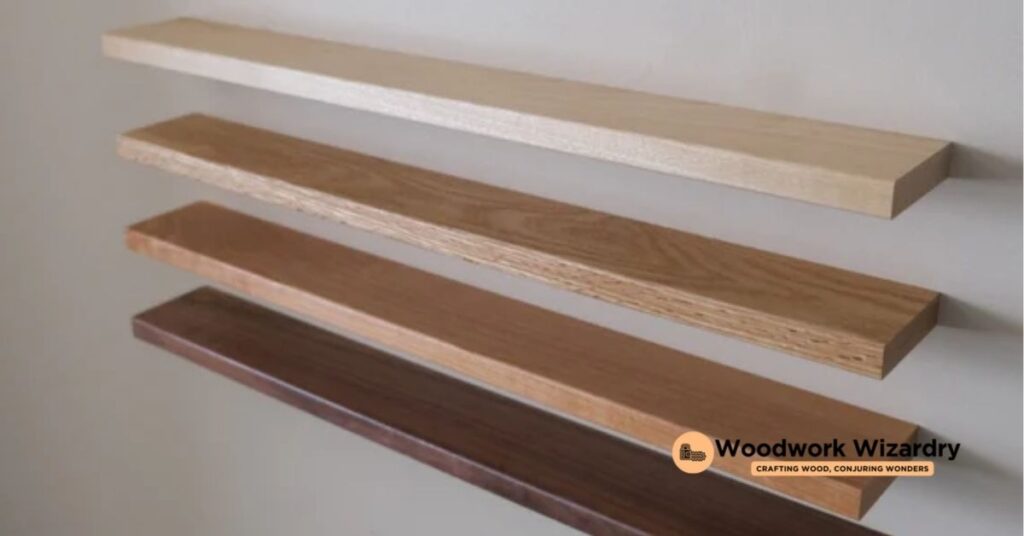
Choosing the right plywood for your shelving projects isn’t just about picking the type—it’s also crucial to consider the thickness and grade of plywood. These factors play a significant role in the durability and look of your finished shelves.
Understanding Plywood Thickness for Shelf Stability
When we’re talking about shelf stability, thickness really comes into play. Generally, the thicker the plywood, the more weight it can support without sagging. For most shelving applications, we recommend using plywood that is at least 3/4 inch thick. This provides a good balance between strength and cost-effectiveness. For lighter loads, such as small knick-knacks or books, 1/2 inch thick plywood might suffice, but for anything heavier, like a full library of books or kitchenware, going for 3/4 inch or even 1 inch thick plywood is best. It’s all about anticipating the load your shelves will bear and choosing accordingly.
The Importance of Plywood Grade for Shelf Aesthetics
Plywood isn’t just a functional material; it also contributes to the aesthetics of your shelves. Plywood is graded based on the quality of its surfaces, with grades ranging from A (the highest quality) to D (the lowest). For shelves that will be highly visible or part of your home’s decor, we suggest opting for A or B grade plywood. These grades ensure a smooth, attractive surface that’s ideal for staining or painting. Conversely, if the shelves will be utilitarian and not in the main view, such as in a garage or storage area, C or D grade plywood could be a more cost-effective choice. Remember, selecting the right grade enhances the look of your shelves and ensures they complement your space beautifully.
Top 5 Best Plywood for Shelves
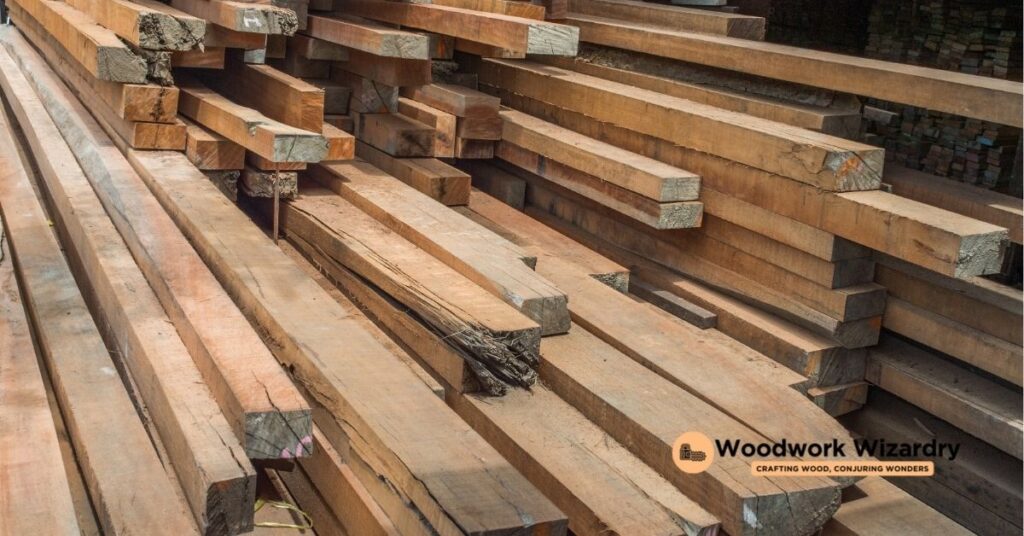
After discussing the importance of thickness and grade, let’s dive into our top picks for the best plywood for shelves. Each option comes with its unique benefits, suiting different needs and aesthetic preferences.
Baltic Birch Plywood: The Premium Choice
Opting for Baltic Birch plywood means you’re getting unbeatable strength and stability. It’s renowned for its uniform grain and thickness, making it ideal for shelves that require both durability and a premium finish. Plus, its void-free core ensures that your shelves won’t warp or sag over time. We highly recommend it for high-traffic areas or where you want your craftsmanship to stand out.
Oak Plywood: For a Touch of Elegance
If you’re aiming for shelves with a rich texture and a hint of classic charm, Oak plywood should be your go-to. Its distinct grain pattern adds an element of elegance and sophistication to any space. Besides its beauty, Oak plywood offers excellent durability, capable of supporting heavier items without bending. It’s perfect for creating a focal point in your living room or office.
Maple Plywood: Durable and Visually Appealing
Maple plywood strikes the perfect balance between durability and visual appeal. Its fine, uniform grain provides a smooth, clean look that’s versatile for both modern and traditional settings. This plywood is not only good-looking but also robust enough to handle considerable weight, making it suitable for shelves in kitchens or libraries where you need a blend of function and style.
Pine Plywood: Lightweight and Cost-Effective
For those who prioritize ease of handling and affordability, Pine plywood is an excellent choice. Its lighter weight makes it easy to work with, especially for DIY projects. Though it’s softer than hardwood varieties, Pine plywood still offers sufficient durability for light to medium storage needs. Its natural knots and grain add character, perfect for rustic or country-themed interiors.
Marine-Grade Plywood: Best for Humid Environments
When shelves are destined for bathrooms, kitchens, or outdoor areas, Marine-grade plywood stands out as the ideal choice. It’s engineered to resist moisture and withstand humid environments without deteriorating. While it’s on the pricier side, its longevity in damp conditions makes it a worthwhile investment. If you’re planning shelves for spaces exposed to moisture, going with Marine-grade plywood ensures they’ll last for years to come.
Each of these types of plywood brings something special to shelf projects, catering to diverse preferences in durability, aesthetics, and environmental suitability. Whether you’re drawn to the elegance of Oak, the resilience of Baltic Birch, or the moisture resistance of Marine-grade plywood, there’s an option that’ll meet your shelving needs perfectly.
Installation Tips for Plywood Shelves
Now that we’ve explored the best plywood options for your shelves, let’s ensure those shelves are installed properly and securely. We’re here to share some handy tips for both preparing your plywood sheets and making sure they’re cut and mounted like a pro.
Preparing Plywood Sheets for Installation
- Measure Twice, Cut Once: Before anything else, it’s crucial to have the right measurements. Double-check the dimensions of your shelf space to ensure your plywood fits perfectly. Incorrect measurements can lead to wasted materials and a frustrating installation process.
- Smooth the Edges: After cutting, plywood edges can be rough. Use a fine-grit sandpaper to smooth out any splinters or rough edges. This not only makes your shelves safer but also prepares them for any finish or paint application, providing a clean, professional look.
- Seal or Prime: Depending on your preference or the location of your shelves, you might want to seal or prime the plywood. This step is especially important if the shelves will be exposed to humidity or if you’re going for a painted finish. A good sealant or primer provides a layer of protection and ensures a longer lifespan for your shelves.
- Test Fit: Before mounting your shelves, always do a test fit. This ensures that any final adjustments can be made without the pressure of undoing mounts or hardware. It’s a simple step that can save a lot of time and ensure that your shelves sit exactly how you want them.
- Use the Right Tools: For cutting plywood, a circular saw or table saw with a fine-toothed blade is ideal. These tools help achieve clean, straight cuts. If you’re using a handheld saw, consider using a guide to maintain straight lines.
- Support the Plywood: When cutting large sheets of plywood, it’s essential to support the entire sheet. Unsupported plywood can bend or break, leading to inaccurate cuts. Support stands or a large work surface can help prevent these issues.
- Secure Mounting: Whether you’re going for wall-mounted shelves or freestanding units, ensuring your shelves are securely mounted is key. For wall-mounted shelves, use wall anchors appropriate for your wall type (drywall, plaster, or concrete), and for freestanding units, make sure the base is stable and level.
- Distribute Weight Evenly: When placing items on your newly installed shelves, remember to distribute the weight evenly. This prevents sagging and maintains the structural integrity of your shelves, especially important for those made of plywood.
Following these tips and tricks will help you install shelves that are not only visually appealing but also sturdy and long-lasting. Plywood provides a great starting point, but proper installation is what brings the project to life.
Finishing and Maintaining Your Plywood Shelves
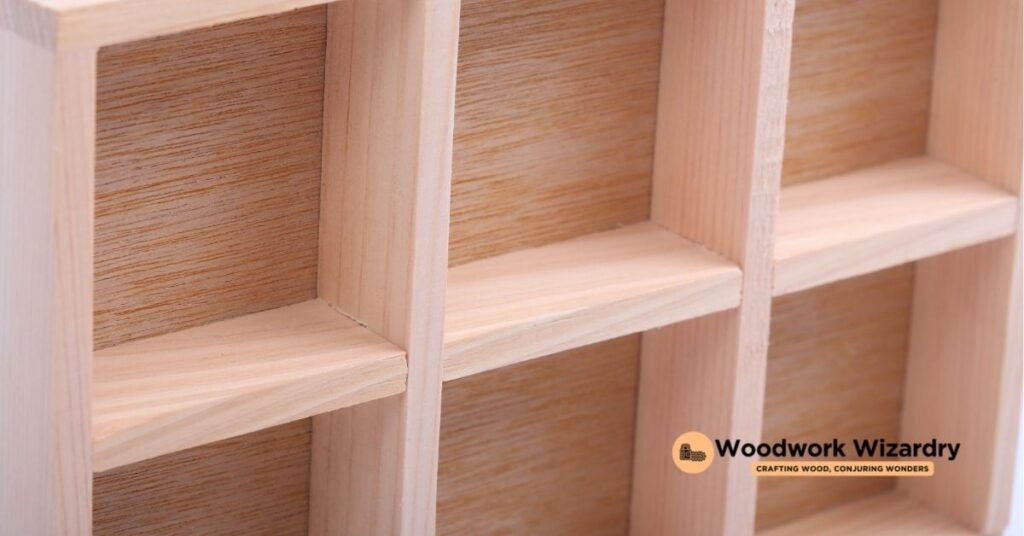
After you’ve nailed the installation of your plywood shelves, it’s time to think about giving them a perfect finish and keeping them in top shape. Let’s dive into how to select the right finish for your shelves and share some routine maintenance tips to ensure they last for years.
Selecting the Right Finish for Your Shelves
Choosing the right finish can significantly impact the look and durability of your plywood shelves. Here are our top picks:
- Polyurethane: Offers a durable, clear coat that protects against scratches and water damage. It’s perfect for shelves that’ll hold heavy items or be placed in high-traffic areas.
- Danish Oil: Enhances the natural beauty of plywood with a warm, satin finish. It’s ideal for Oak plywood shelves, bringing out the grain’s elegance.
- Lacquer: Provides a sleek, glossy finish that’s easy to clean. It works wonders on Baltic Birch plywood, highlighting its strength and stability.
- Shellac: A natural product that delivers a rich, warm finish. Best for indoor shelves where the look is as important as functionality.
- Paint: Offers endless color options to match your decor. Use a primer made for plywood before painting to ensure even, long-lasting coverage.
Routine Maintenance Tips to Extend Shelf Life
Keeping your plywood shelves looking their best doesn’t require much effort, but a little care goes a long way. Here are some tips:
- Regular Dusting: Use a soft cloth or microfiber duster to remove dust particles. This prevents scratches and keeps the surface smooth.
- Immediate Spill Cleanup: Wipe away spills as soon as they happen to prevent water damage and stains, especially important for less water-resistant finishes like Danish oil or shellac.
- Avoid Overloading: Distribute weight evenly and avoid placing very heavy items on the shelves to prevent sagging and structural damage.
- Reapply Finish as Needed: Depending on wear and tear, you might need to reapply your chosen finish every few years to maintain protection and luster.
- Inspect for Damage Regularly: Look out for any signs of wear or damage. Early detection can prevent more extensive repairs down the line.
By selecting the right finish for your plywood shelves and following these maintenance tips, you’ll ensure your shelves not only look great but also stand up to the test of time.
Conclusion
We’ve walked through the journey of selecting, installing, finishing, and maintaining the perfect plywood shelves for any space. Whether you’re drawn to the durability of Baltic Birch, the elegance of Oak, or the moisture resistance of Marine-grade plywood, there’s a fit for every need and environment. Remember, the key to long-lasting, beautiful shelves lies not just in the choice of plywood but in the care and effort put into installation and upkeep. Don’t forget to pick a finish that complements your chosen plywood and to follow our maintenance tips to keep your shelves looking great year after year. Here’s to creating functional, stylish storage solutions that stand the test of time!
Related Posts:
- Ultimate Guide: Best Plywood for Shelves & Maintenance Tips
- Top Best Adhesives for Plywood: Ensure Strong Bonds for Your Projects
- Top Plywood Picks for Durable Workbenches: A Buyer’s Guide
- Top Plywood Picks for Durable & Stylish Doors: A Guide
- Top Choice: Finding the Best Plywood for Durable, Eye-Catching Signs
- Top Plywood Tools for Woodworking: A Comprehensive Guide
- Top Plywood Ideas: Transforming Interiors from Floors to Ceilings
- Understanding Exterior Plywood: Grades, Types, and Maintenance Tips



